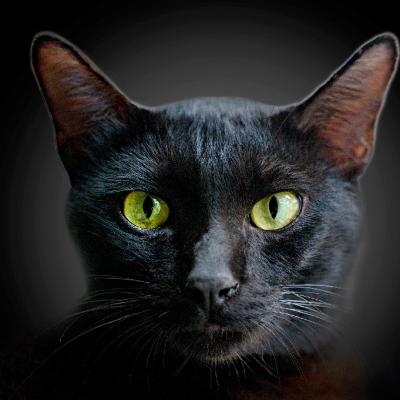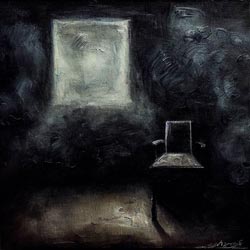 "Deaf, Dumb, and Blind," a tale penned by C. M. Eddy, Jr., with the discernible touch of Howard P. Lovecraft, brings forth a macabre symphony of terror that echoes Lovecraft's uniquely chilling style of cosmic horror. Dripping with an oppressive aura of dread and a haunting atmosphere of despair, the tale spins a narrative of grotesque fascination that clings to the mind like a tenacious specter.
"Deaf, Dumb, and Blind," a tale penned by C. M. Eddy, Jr., with the discernible touch of Howard P. Lovecraft, brings forth a macabre symphony of terror that echoes Lovecraft's uniquely chilling style of cosmic horror. Dripping with an oppressive aura of dread and a haunting atmosphere of despair, the tale spins a narrative of grotesque fascination that clings to the mind like a tenacious specter.
 Plunging deep into the phantasmal abyss of man's darker inclinations, we find ourselves enmeshed within the ghastly folds of "The Loved Dead," a chilling tale born from the union of the brooding minds of C.M. Eddy, Jr. and H.P. Lovecraft. It is within this fearful narrative that the uncanny pallor of Lovecraftian horror is juxtaposed against Eddy's similarly macabre themes, birthing a tale both gruesome and haunting, yet replete with its own morose beauty.
Plunging deep into the phantasmal abyss of man's darker inclinations, we find ourselves enmeshed within the ghastly folds of "The Loved Dead," a chilling tale born from the union of the brooding minds of C.M. Eddy, Jr. and H.P. Lovecraft. It is within this fearful narrative that the uncanny pallor of Lovecraftian horror is juxtaposed against Eddy's similarly macabre themes, birthing a tale both gruesome and haunting, yet replete with its own morose beauty.
 Into the abyss of Lovecraft's oeuvre descends "Under the Pyramids", a tale wrought not for mere literary purpose but commissioned for the celebrated master of escape, Harry Houdini. Akin to an enigmatic sphinx, this tale reclines amid the bleak sand-dunes of Lovecraft's storytelling, silently inviting scrutiny. For it is here that Lovecraft amalgamates the real with the unreal, his characteristic cosmic horror with a narrative built around the person of Houdini himself.
Into the abyss of Lovecraft's oeuvre descends "Under the Pyramids", a tale wrought not for mere literary purpose but commissioned for the celebrated master of escape, Harry Houdini. Akin to an enigmatic sphinx, this tale reclines amid the bleak sand-dunes of Lovecraft's storytelling, silently inviting scrutiny. For it is here that Lovecraft amalgamates the real with the unreal, his characteristic cosmic horror with a narrative built around the person of Houdini himself.
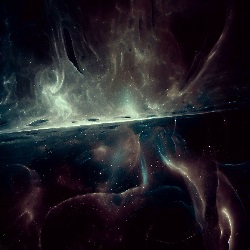 In the abyssal and eldritch expanse of the cosmos, there exist concepts which defy human understanding, existing beyond the reaches of our feeble minds. Among these elusive ideas, two distinct branches of thought emerge: Cosmicism and Neocosmicism. It is my solemn duty, as an observer of the arcane and the unknown, to illuminate these of the nascent 20th century doctrines and their significance to the human experience. In this essay, we shall endeavor to dissect each in detail, providing examples to elucidate their nature and juxtapose their characteristics. Thus, the reader may embark on a journey through the abyssal realms of cosmic philosophy, armed with the knowledge and understanding of these esoteric tenets.
In the abyssal and eldritch expanse of the cosmos, there exist concepts which defy human understanding, existing beyond the reaches of our feeble minds. Among these elusive ideas, two distinct branches of thought emerge: Cosmicism and Neocosmicism. It is my solemn duty, as an observer of the arcane and the unknown, to illuminate these of the nascent 20th century doctrines and their significance to the human experience. In this essay, we shall endeavor to dissect each in detail, providing examples to elucidate their nature and juxtapose their characteristics. Thus, the reader may embark on a journey through the abyssal realms of cosmic philosophy, armed with the knowledge and understanding of these esoteric tenets.
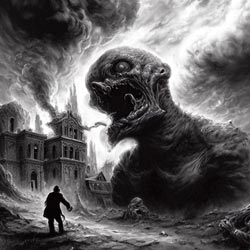 Diving headfirst into the abyssal cosmos of Lovecraftian horror and merging it with the elusive allure of C. M. Eddy, Jr's enigmatic storytelling, "The Ghost-Eater" is a grotesque tapestry woven with a blend of the grotesque and the bizarre.
Diving headfirst into the abyssal cosmos of Lovecraftian horror and merging it with the elusive allure of C. M. Eddy, Jr's enigmatic storytelling, "The Ghost-Eater" is a grotesque tapestry woven with a blend of the grotesque and the bizarre.
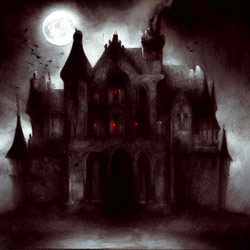 Among the grim chronicles of H.P. Lovecraft's foray into cosmic horror, "The Rats in the Walls" festers in a crypt of its own, subtly weaving an uncanny dread through its pages. It shines, like a sickly moon in a foreboding sky, illuminating the depths of human degeneration and the perpetual curse of ancestry.
Among the grim chronicles of H.P. Lovecraft's foray into cosmic horror, "The Rats in the Walls" festers in a crypt of its own, subtly weaving an uncanny dread through its pages. It shines, like a sickly moon in a foreboding sky, illuminating the depths of human degeneration and the perpetual curse of ancestry.
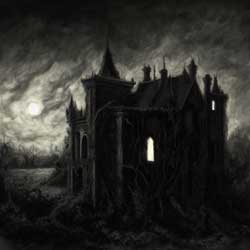 Submerged in the murky depths of H.P. Lovecraft and C.M. Eddy Jr.'s conjoint creation, "Ashes," we find ourselves confronted by an embodiment of Lovecraft's signature cosmic horror and Eddy's skillful blend of the grotesque and psychological terror. It is a confluence of these creative minds that carves out an abyss of dread, establishing a macabre piece which forms a chilling cornerstone of their collaborative works.
Submerged in the murky depths of H.P. Lovecraft and C.M. Eddy Jr.'s conjoint creation, "Ashes," we find ourselves confronted by an embodiment of Lovecraft's signature cosmic horror and Eddy's skillful blend of the grotesque and psychological terror. It is a confluence of these creative minds that carves out an abyss of dread, establishing a macabre piece which forms a chilling cornerstone of their collaborative works.
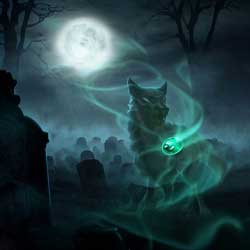 Tartarean depths of literary horror, they hold tales, few and far between, that echo with a chill as does "The Hound" by Howard Phillips Lovecraft. A narrative, grotesque in its beauty, stands as testament to the author's craft, a tapestry woven of terror, ensnaring the reader in eldritch threads.
Tartarean depths of literary horror, they hold tales, few and far between, that echo with a chill as does "The Hound" by Howard Phillips Lovecraft. A narrative, grotesque in its beauty, stands as testament to the author's craft, a tapestry woven of terror, ensnaring the reader in eldritch threads.
- Lovecraft - Horror at Martin's Beach, A Review
- Lovecraft - What the Moon Brings, A Review
- Lovecraft - Hypnos, A Review
- Lovecraft - The Lurking Fear, A Review
- Lovecraft - Celephaïs, A Review
- Lovecraft - The Music of Erich Zann, A Review
- Lovecraft - Herbert West—Reanimator, A Review
- Lovecraft - The Nameless City, A Review
- Lovecraft - The Tree, A Review
- Lovecraft - The Picture in the House, A Review

